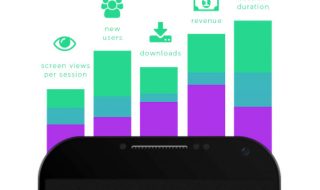
Use Technology To Your Advantage

5 Ways Tech Startups Can Save Money
There is no end to the technological potential available for most digital startups today. If you’re wise enough to do your homework, you can start your business for tens of thousands less than your competitors, and get yourself profitably “in the green” in less time than has been the average.
You’re going to need to incorporate a multi-pronged approach which considers diverse factors. For example, you’re going to want the latest in architectural, energy, technology, and infrastructural innovation. Consider this scenario: you build and own your own building, design it grid-independent and receive a tax-break to do so, and almost entirely curtail the need for on-site networks or employees.
This can be done through purchase of a prefabricated metal building. Such buildings can be built at a baseline of $16 per square foot—though with amenities and finishing touches, you’ll probably be closer to $60 by the time the building is finished. That means on the high end you’ve got a 2,000 square-foot building for $120k. On the low-end, you’ve got it for $32k.
Green Energy

SMART STARTUP HAS A NEW IDEA FOR RENEWABLE ENERGY, AND IT INVOLVES GIANT KITES
Now you want to outfit that building with sustainable energy solutions. As a digital startup, depending on your concentration, operations may or may not need to be centrally located. If central location isn’t key to operations, for sustainability purposes, it makes sense to build your structure near a moving body of water.
It turns out that going the green-energy route may additionally prove a cost-effective investment. That way you can install water turbines, solar energy systems and wind turbines. Spending $5k per system, you’d be at $15k by the time this was done, and probably average around 15.3 kWh should all three systems be activated simultaneously. Now you’ve got a redundantly secured energy system that’s entirely off-grid and costs you nothing to use.
BYOD And The Cloud

The Privacy Issues You Should (And Shouldn’t) Worry About With BYOD
Once you get your building set up, you’ll want to outsource your business’s network to the cloud. Use Desktop as a Service (DaaS) and Software as a Service (SaaS) to “float” your network such that wherever the internet can be accessed, so can your system. Now you can incorporate a BYOD (Bring Your Own Device) system which cuts the cost of hardware.
You’ll additionally want to employ cloud-based applications for purposes of security and infrastructural fluidity. These can help reduce the number of employees necessary to helm operations. A great way to do this is through applications that surrogate traditional office roles, like payroll and timekeeping.
When it comes to using time sheets, there are digital solutions that are definitely considerable. Downloadable timesheets will maximize their functionality and streamline how you track time. This way you will get an easy overview of how many hours your team has been working.
Your final step might be to cut redundancies out of intra-business transactions. A great way to do this is to seek credit card processing fee reduction through specialized agencies.
Everything Working Together

Amazon’s cashier-free Go stores may only need six human employees
If you own instead of rent, you’ll save thousands a month. If you outsource hardware to BYOD solutions over the cloud, you’ll save tens of thousands annually. Streamlining business through cloud-based apps that surrogate the need for traditional employees can save you $30k+ a year (that’s at least one qualified individual’s salary), and sustainable energy options cut utility costs continually.
Through these means, a startup can excise as much as $100k or even more from initiation expenses. That $100k during the first five years could be the difference between successful operation and expansion, and bankruptcy. So do your homework and use technology to your advantage. You may save tens of thousands of dollars as a result.




